 Dal 1959 i Premi iniziano a essere affollati, infatti nell’anno 1959 ci sono ben 23 opere menzionate: 5 nei romanzi, 8 nelle novelette e 10 nei racconti brevi. Pure gli anni successivi proseguono con la stessa modalità, anche se più contenuti: nel 1960 sono 10 in totale; nel 1961 sono 9; nel 1962 e 1963 ritornano a 10. Nei premi degli anni successivi al 1959 scompare la premiazione delle Novelette, cosa che si protrarrà fino al 1966.
Dal 1959 i Premi iniziano a essere affollati, infatti nell’anno 1959 ci sono ben 23 opere menzionate: 5 nei romanzi, 8 nelle novelette e 10 nei racconti brevi. Pure gli anni successivi proseguono con la stessa modalità, anche se più contenuti: nel 1960 sono 10 in totale; nel 1961 sono 9; nel 1962 e 1963 ritornano a 10. Nei premi degli anni successivi al 1959 scompare la premiazione delle Novelette, cosa che si protrarrà fino al 1966.

1959 Hugo
 Presentato alla Detention, Detroit, 4-7 Settembre 1959, da Isaac Asimov e Robert Bloch.
Presentato alla Detention, Detroit, 4-7 Settembre 1959, da Isaac Asimov e Robert Bloch.
Romanzo vincitore (Novel):
A Case of Conscience di James Blish
1958; Ballantine Books; #256; $ 0.35; pg.188
In origine era una Novella pubblicata su: If, September 1953; Ed. James L. Quinn; Quinn Publishing Company, Inc.; Buffalo, NY; $ 0.35; pg. 124
Inserita nel romanzo come Libro Primo (Book One).
Guerra al Grande Nulla: Cosmo Oro n. 17 del Maggio 1975; Urania n. 226 del 27 Marzo 1960; Urania n. 474 del 5 Novembre 1967.
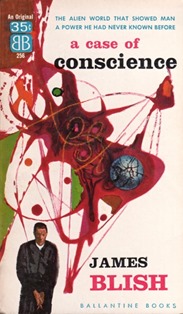
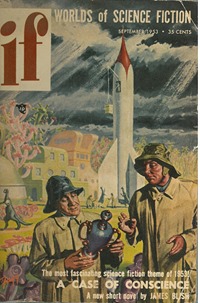
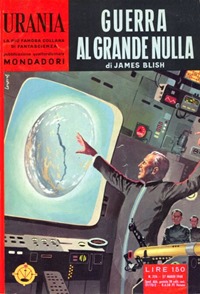
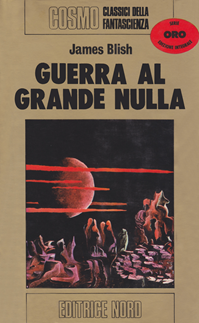

L’anno è il 2049; il luogo è Lithia, secondo pianeta di una stella di tipo Sole: Alpha arietis, nella costellazione dell’Ariete. Una commissione di quattro scienziati provenienti dalla Terra, incaricati di studiare Lithia, vi ha scoperto una civiltà estremamente interessante. I Lithiani hanno aerei a reazione, ma non hanno telefoni; non conoscono il magnetismo, ma sanno usare in modo sconosciuto alla Terra i fenomeni dell’elettricità statica. La flora e la fauna di Lithia, poi, ne fanno un vero paradiso per il biologo, con grandi laghi, ampie foreste in cui vivono forme animali analoghe a quelle terrestri. Ma il biologo della commissione, il gesuita Padre Ramon Ruiz-Sanchez, scopre che Lithia non presenta soltanto i normali problemi scientifici; infatti, una volta messi insieme i primi particolari, ne emerge un grave dilemma teologico. Gli alti, pacati Lithiani sembrano una razza perfetta: non conoscono odi, delitti, passioni. Ma non conoscono neppure il concetto di divinità… Può esistere, separato da Dio, un simile Giardino dell’Eden? E chi, se non Dio, ha creato i Lithiani? Con spietata chiarezza, il gesuita comprende come la sua ricerca e la sua fede lo conducono inesorabilmente all’eresia.
Altri romanzi nominati:
1 – The Enemy Stars (aka: We have fed our sea) di Poul Anderson: Astounding Science Fiction; Aug /Sep. 1958; Ed. John W. Campbell, Jr.; Street & Smith Publications, Inc. : $ 0.35; pg. 164.
Inedito in Italia: Nella mia collezione: SF inglese, Baen ed. July 1987. Comprende pure la prima parte della Sequel – The Ways of Love. First published in Destinies, Vol 1, No 2 (Jan 1979), this novelette was first incorporated into The Enemy Stars in the 1987 Baen Books edition. The story is told in the first person, narrated by Voah, the alien who had brought David Ryerson’s body back to the Southern Cross.
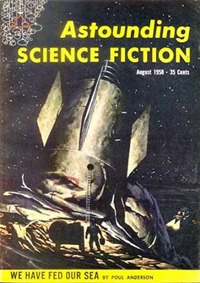
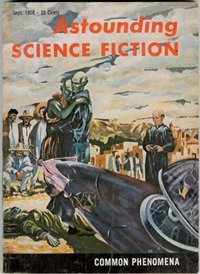

The Enemy Stars was originally published in Astounding Science Fiction under the title We Have Fed Our Sea__. That title refers to the first stanza of the second part of Rudyard Kipling’s poem “The Song of the Dead”, which Anderson quoted at the end of his story. The poem refers to the British sailors who have died at sea in their efforts to give England mastery of Earth’s oceans, and Anderson discerned an analogous sacrifice that will be made by Terrans in their efforts to reach the stars. “For that is our doom and our pride. We have fed our sea for a thousand years….”
The time is the 23rd century, and ships are crawling outward from Earth into the interstellar depths. It will take them centuries to reach even the nearest stars – but once they do, future travel will be instantaneous, because the ships carry matter transmitters that are not subject to the limitations of lightspeed. In the meantime, crews can flit back and forth between the ships and Earth, but until now their only purpose has been to stand watch. Until now. At last one ship has made contact with the stars…
2 – Who? di Algis Budrys: 1958; Pyramid Books; #G339; $ 0.35; pg. 157.
Incognita uomo: Galassia 64/1; Classici Urania n. 135 del Giugno 1988; SF Inglese (Fontana).
Ben vengano i trattati fra Est e Ovest quando servono ad aumentare la distensione, ma non conviene farsi troppe illusioni in materia di segreti scientifici e militari. Supponiamo che in un laboratorio americano situato nei pressi di una frontiera da sempre considerata calda si verifichi un grave incidente, e che i primi a soccorrere i superstiti siano i sovietici. Supponiamo che l’unico superstite sia anche il piu importante, il dottor Lucas Martino, il solo uomo al corrente al progetto K-88. E ora supponiamo che i sovietici restituiscano agli americani il dottor Martino dopo averlo di certo strappato alla morte… ma “ricostruito” con un viso e altre parti del corpo interamente di metallo. Se foste sovietici, restituireste lo stesso uomo? E se foste americani, credereste ai sovietici? Se infine foste il dottor Lucas Martino, come vi sentireste a stare nel mezzo?
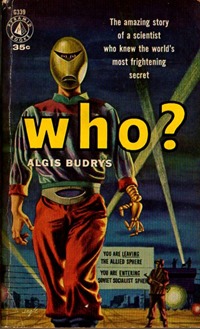
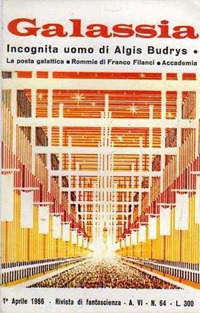

3 – Have Space Suit-Will Travel di Robert A. Heinlein: Sep 1958; Charles Scribner’s Sons;
$ 2.95; pg. 276.
Era uscito seriale in F&SF Aug, Sep, Oct 1958; Mercury Press, Inc.; $ 0.35; pg.132.
La tuta spaziale: Avventura A.M.Z. n. 2 del Settembre 1971.
“Tutto incominciò quando vinsi una tuta spaziale”… I mostri vogliono conquistare lo spazio, ma le Tre Galassie vigilano operose e terribili. Anche la Terra sta per essere condannata! Riuscirà a salvarsi?
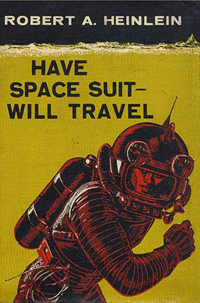
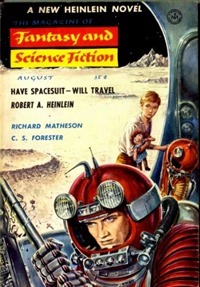
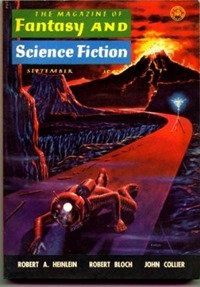


4 – Immortality, Inc. (aka: Time killer) di Robert Sheckley: Galaxy Oct,Nov,Dec 1958, Feb 1959; Ed. H. L. Gold; Galaxy Publishing Corporation; $0.35; pg.148 (per i primi tre numeri); $ 0.50 e pg.196 per l’ultimo.
Ammazzare il tempo: Galaxy n. 7 del Dicembre 1958, n. 8-9-10 del Gennaio-Febbraio-Marzo 1959; Ed. Due Mondi – Anonima aldilà: Classici U. n. 190 del Gennaio 1993 – U. Coll. n. 126 del Luglio 2013 – SF Inglese (Bantam).
Le ingiustizie di questo mondo saranno infinite, ma non illudetevi che l’aldilà sia uno specchio di equità e candore. No, se vi chiamate Thomas Blaine e ripensate alle circostanze della vostra morte con l’imparzialità che merita un argomento così solenne, vi accorgerete che persino in quell’occasione hanno trovato il modo di fregarvi. Ma se vi chiamate Thomas Blaine e vi trovate, in carne ed ossa, un passo oltre la fatale soglia, avete ancora la possibilità di giocare una mano e rovesciare le carte avverse. Attenzione, però: è pur sempre una partita pericolosa, ricca di tranelli e insidie. Ed è l’ultima…
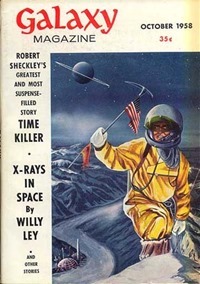

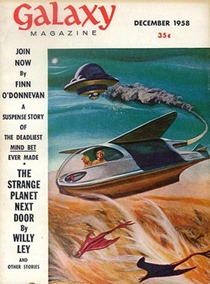
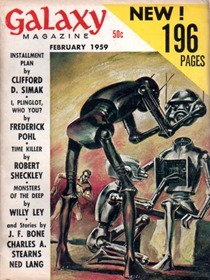



Racconto lungo vincitore (Novelette):
The Big Front Yard di Clifford F. Simak: Astounding Science Fiction, October 1958; Ed. John W. Campbell, Jr.; Street & Smith Publications, Inc.; $ 0.35; pg. 164.
L’aia grande: Gamma 5/1 del Marzo 1966; GO Nord n. 2/13 Ottobre 1977
The story is about the conversion of an ordinary house into an interplanetary portal or stargate by mysterious alien beings who apparently have taken up the task of exploring space for habitable planets and connecting them to each other, thus allowing civilizations to swap ideas easily.
A tinkerer and trader, Hiram Taine, finds out that his house contains peculiar creatures who repair and upgrade things in interesting ways and transform parts of his house to a substance impervious to harm. After unearthing a spaceship buried in the backyard, he discovers that the front part of his house is no longer on Earth but on a strange desert planet which is now accessible by merely passing through the front door. A little exploration in the desert reveals the existence of another similar house which opens to a rainy planet and some spaceships identical to the one unearthed in the backyard sitting in launch cradles next to some other empty launch cradles, implying several other similar houses. The story ends with the arrival of some aliens of either the desert planet or one of those connected to it, who are eager to trade ideas with the new member of the universal “planet-network”.
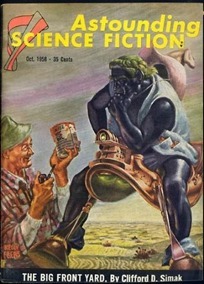
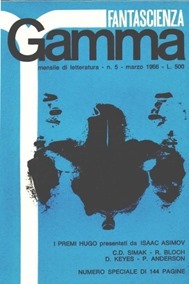

Altre novelette nominate:
1 – Unwillingly to School di Pauline Ashwell: Astounding Jan 1958; Ed. John W. Campbell, Jr.; Street & Smith Publications, Inc.; $ 0.35; pg.164.
Inedito in Italia: Nella mia coll. ho l’originale Astounding Vol. 60 n. 5.
Più tardi, viene scritto il romanzo:
Unwillingly to Earth (1993), a fix-up of four previously published stories detailing the space adventures of the young Lysistrata (aka “Lizzie”) Lee, including: “Unwillingly to School” (Astounding Science Fiction, January 1958), set on the rough mining planet where Lizzie was born and from which she was sent against her will to university on Earth. “Rats in the Moon” (Analog Science Fiction/Science Fact, November 1982), where Lizzie exposes plots of interplanetary political corruption on Earth’s Moon. “Fatal Statistics” (Analog Science Fiction/Science Fact, July 1988), where Lizzie negotiates between hostile factions on the planet Figueroa, whose civilization collapsed, and helps survivors make a new start. “The Lost Kafoozalum” (Analog Science Fact -> Fiction, October 1960), where Lizzie takes part in a daring plot to avert nuclear war on the planet Incognita, and when things go terribly wrong she sets them right, saves the life of her professor and eventually marries him.
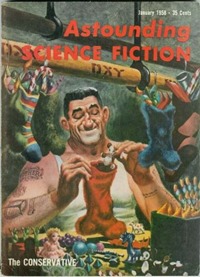
2 – Captivity di Zenna Henderson: The Magazine of Fantasy and Science Fiction, June 1958; Ed. Anthony Boucher; Mercury Press, Inc.; $ 0.35; pg. 132
Prigionia: U. Classici n. 198 del Settembre 1993 – Il romanzo completo Il libro del popolo contiene i seguenti racconti:
1 – Ararat, 1952
2 – Gilead, 1954
3 – Primogenitura – Pottage, 1955
4 – Deserto – Wilderness, 1957
5 – Prigionia – Captivity, 1958
6 – Giordano – Jordan, 1959
Cittadine sonnolente della provincia americana, piccoli negozi, fattorie isolate nel verde, automobili d’epoca… Cosa può esserci di più tranquillo e rassicurante? Ma in questo scenario bucolico si nasconde l’ignoto: un gruppo di uomini e donne che fisicamente somigliano a tutti gli altri eppure non sono come gli altri; una serie di ricordi ininterrotti che non hanno origine sulla terra; straordinari poteri mentali e addirittura taumaturgici, la capacità di guarire gli altri o di capirli con uno sguardo…. Chi sono i membri del Popolo? Che cosa fanno sulla Terra? E, soprattutto, quali sono le loro intenzioni?
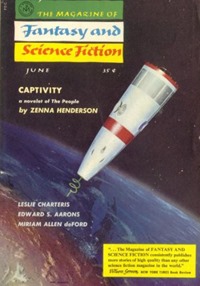
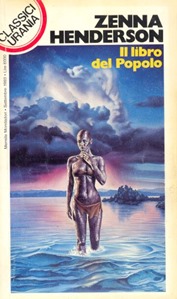
3 – Reap the Dark Tide (aka: Shark Ship) di C. M. Kornbluth: Vanguard Science Fiction, June 1958; Ed. James Blish; Vanguard Science Fiction, Inc.; $ 0.35; pg.132
La nave squalo: U. n.334/3 del 17-5-1964; U. n. 1056/11 del 30-8-1987
Per sfuggire alla sovrappopolazione e all’inquinamento che devastavano i continenti, milioni di persone iniziarono a vivere sul mare, cibandosi del pesce che pescano. Dal giuramento dei padri fondatori di non mettere più piede sulla terra ferma. nasce una vera e propria civiltà sul mare, costituita da diversi convogli che si spartiscono le zone di pesca. Ogni nave, guidata dal proprio comandante, deve badare a sé stessa ed essere autosufficiente; per questo la vita di bordo è sottoposta ad una rigida disciplina. La nave del comandante Salter durante una forte tempesta perde la rete, viene quindi esclusa dal convoglio e abbandonata a sé stessa. L’unica via di salvezza per l’intero equipaggio è provare a visitare la terra ferma. Salter e tre membri dell’equipaggio scendono in quella che anticamente era New York dove trovano gli ultimi sopravvissuti di una civiltà caduta nella follia. Decidono di far avvicinare la nave alla costa, iniziando a pescare i grossi pesci che sono sopravvissuti soltanto in quei pressi, per poi costruire un ponte che collegherà la nave alla terraferma, primo passo per la sua riconquista.
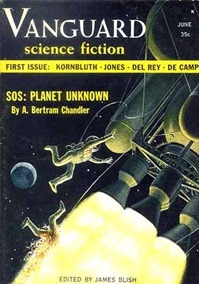
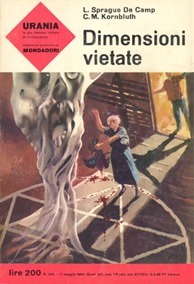
![u1056[3] u1056[3]](http://andromedasf.altervista.org/wp-content/uploads/2016/12/u10563.jpg)
4 – A Deskful of Girls di Fritz Leiber: The Magazine of Fantasy and Science Fiction, April 1958; Ed. Anthony Boucher; Mercury Press, Inc.; $ 0.35; pg. 132
Un ufficio pieno di ragazze: Il Meglio della Fantascienza, Siad, n. 1/16 del Novembre 1985
Nessuna trama.

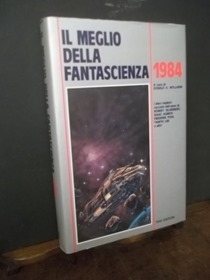
5 – Second Game di Katherine MacLean and Charles V. De Vet (aka: Cosmic Checkmate): Astounding Science Fiction, March 1958; Ed. John W. Campbell, Jr.; Street & Smith Publications, Inc.; $ 0.35; pg.164.
La seconda partita: Il grande libro della fantascienza, Società del futuro, Romanzi brevi degli anni ’50, del Marzo 1992, (Edgar Mammut Interno giallo).
“Cosmic Checkmate” (1958). This collaboration by MacLean and Charles V. De Vet, published in Astounding Science Fiction (March, 1958), was nominated for a 1959 Hugo. It was expanded as Second Game in 1962 and again in 1981. Two gamers play a multi-level game to determine whether Earth’s civilization wins.
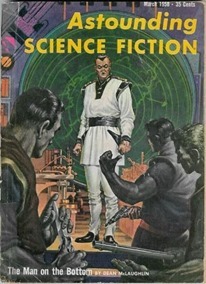
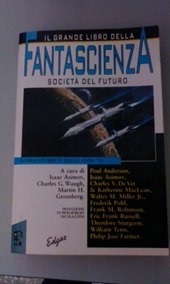
6 – Rat in the Skull di Rog Phillips: If, December 1958; Ed. Damon Knight; Quinn Publishing Company, Inc.; Buffalo, NY; $ 0.35; pg.124
Inedito in Italia: nella mia libreria l’originale If del 1958.
Rog Phillips’ Rat in the Skull is a giant-helping of classic Golden Age science fiction. Included is Phillips’ science fiction masterpiece, “Rat in the Skull” (unavailable for nearly fifty years). What the magazine editors said then about this controversial, Hugo nominee novelette remains true today: “Some people will be shocked by this story. Others will be deeply moved. Everyone who reads it will be talking about it. Read the first four pages: then put it down if you can.”

7 – The Miracle-Workers di Jack Vance: Astounding Science Fiction, July 1958; Ed. John W. Campbell, Jr. Street & Smith Publications, Inc.; $ 0.35; pg. 164
L’uomo dei miracoli: GO Nord n. 12/9 del Novembre 1986; U n. 1480/10 del 3/12/2003 come I Miracoli degli Antichi.
La colonna partita da Forte Faide avanzava verso oriente, attraverso le basse colline: era una colonna formata da cento cavalieri corazzati, cinquecento fanti, un convoglio di carri. In testa procedeva il Nobile Faide, un uomo alto, nei primi anni della maturità, scarno e felino, dal volto giallastro di chi soffre di fegato. Sedeva nel veicolo ancestrale dei Faide, che aveva la forma di una barca e scivolava ad una altezza di cinquanta centimetri dal muschio; oltre alla spada e alla daga, portava al fianco le sue armi ancestrali.
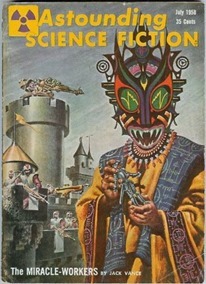


Racconto vincitore (Short story):
That Hell-Bound Train di Robert Bloch: The Magazine of Fantasy and Science Fiction, September 1958; Ed. Robert P. Mills; Mercury Press, Inc.; $ 0.35; pg. 132
Diretto per l’inferno: GO Nord n. 4/6 del Novembre 1978; Grandi Scrittori FS n. 6 (6)/6 del Novembre 1980.
Quando Martin era un bambino, suo padre faceva il ferroviere e, anche se non aveva mai viaggiato sulle grosse locomotive, essendo stato adibito alla manutenzione dei binari, era lo stesso orgoglioso del suo lavoro. Quando era ubriaco, cioè ogni notte, cantava quella canzone del Treno per l’Inferno.


Altre short story nominate:
1 – They’ve Been Working On… di Anton Lee Baker: Astounding Science Fiction, August 1958; Ed. John W. Campbell, Jr.; Street & Smith Publications, Inc.; $ 0.35; pg. 164
inedito in Italia: eBook in inglese.
Nessuna trama.

2 – The Men Who Murdered Mohammed di Alfred Bester: The Magazine of Fantasy and Science Fiction, October 1958; Ed. Robert P. Mills; Mercury Press, Inc. ; $ 0.35; pg. 132
L’uomo che uccise Maometto: U. n. 469/5 de 27/08/1967
Un geniale scienziato torna a casa e trova la moglie abbracciata con uno sconosciuto. Invece di fare fuori la fedifraga, in pochi minuti fabbrica una macchina del tempo, va nel passato e uccide un ragazzo, futuro padre di sua moglie. Torna nel presente e trova la moglie abbracciata con il solito sconosciuto. A questo punto comincia una serie di viaggi nella macchina del tempo durante i quali uccide tutti gli avi della moglie e vari personaggi storici, senza però riuscire a modificare nè la storia nè il fatto che sua moglie sia abbracciata nel salotto con uno sconosciuto. Scopre, però, tornato nel mondo reale, che nessuno riesce più a sentire nè a vedere lui: l’unico effetto che ha ottenuto, modificando la storia, è stato quello di distruggere il proprio passato, rendendo evanescente la propria stessa esistenza.
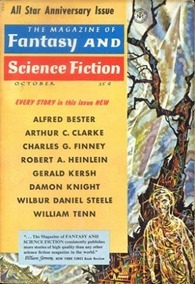

3 – Triggerman di J. F. Bone: Astounding Science Fiction, December 1958; Ed. John W. Campbell, Jr. Street & Smith Publications, Inc.; $ 0.35; pg. 164
L’uomo del detonatore: Tascabili Mursia n. 34/4 Il Meglio di Galaxy 2 del Luglio 1980
Nessuna trama.

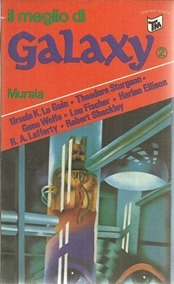
4 – The Edge of the Sea di Algis Budrys: Venture Science Fiction Magazine, March 1958; Ed. Robert P. Mills; Fantasy House, Inc.; $ 0.35; pg.132
Dan Stevenson non molla; Il limite del mare: U n. 444/5 del Settembre 1966; Nova n. 35 (77)/5 del Febbraio 1999;
Nessuna trama.
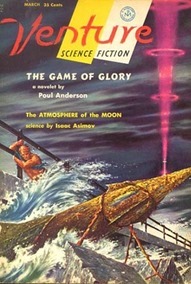
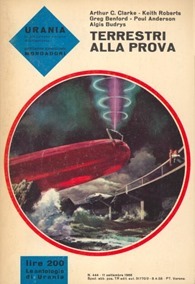

5 – The Advent on Channel Twelve di C. M. Kornbluth: Star Science Fiction Stories No. 4; Nov 1958; Ed. Frederik Pohl; Ballantine Books #272K; $ 0.35; pg.157
L’avvento sul Canale 12: Gamma n. 9bis/8 del Luglio 1966, Dodici Mondi.
Nessuna trama.

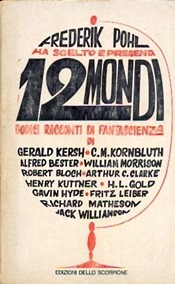
6 – Theory of Rocketry di C. M. Kornbluth: The Magazine of Fantasy and Science Fiction, July 1958; Ed. Anthony Boucher Mercury Press, Inc.; $ 0.35; pg.132
Teoria missilistica: G. n. 141/8 del Maggio 1971.
Foster è il miglior alunno della classe del professor Edel, anzi forse il migliore che abbia mai avuto. Il professore non sa spiegarsi perchè inconsciamente prova una avversione per il ragazzo che si manifesta in piccole cose come mettergli per sbaglio voti bassi… Nel mentre un collega di Edel, il professor Fuqua, è costretto a lasciare l’istituto dopo aver detto la verità nei test psicometrici.
Dopo un colloquio sulla sua tesina, Foster si offre di imbucare la lettera che Edel ha scritto al suo collega; in realtà egli però la consegna alle autorità dell’istituto che, dopo averne letto il contenuto, in poco tempo provvedono a far licenziare anche Edel. Il professore chiede spiegazione per il suo spietato operato al ragazzo che gli comunica di averlo fatto solo per migliorare ancora di più il suo curriculum dimostrando una ferrea condotta morale.
Edel decide di visitare la casa del ragazzo che abita, dopo la morte della madre, solo col padre, di cui ha sempre esaltato le doti, affermando di sognare di diventare come lui. In realtà, Edel scopre che il padre è uno scapestrato alcolizzato e comprende così meglio l’incredibile desiderio di Foster di emergere…


7 – Rump-Titty-Titty-Tum-TAH-Tee di Fritz Leiber: The Magazine of Fantasy and Science Fiction, May 1958; Ed. Anthony Boucher; Mercury Press, Inc.; $ 0.35; pg.132
Rump-titti-titti-tum-TA-ti: Gamma n. 26/2 del Febbraio 1968; Ed. Valentino De Carlo; Edizioni dello Scorpione – Il Meglio della FS Siad n. 1/17, Ottobre 1979: Il meglio di Fritz Leiber.
“Rump-titty-titty-tum-tah-tee”, a story in which several beatnik artists and intellectuals channel the ultimate earworm: a witch doctor, the many-times-great-grandfather of one of the beatniks, sends along the addictive phrase in the title. It comes out in a musical phrase and a paint splatter, and rapidly spreads, disrupting society to the point that the group reconvenes to implore “Many Greats” for the antidote. He provides it, under duress from the higher ups in his current environment.

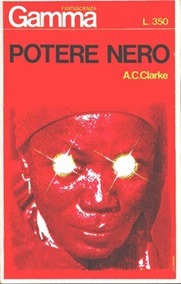

8 – Space to Swing a Cat di Stanley Mullen: Astounding Science Fiction, June 1958; Ed. John W. Campbell, Jr. Street & Smith Publications, Inc.; $ 0.35; pg. 164
Inedito in Italia: eBook in inglese.
His Co-pilot Was A Humanoid Cat! Space pilot Arnold Brook thought he could handle everything. Until he saw his new co-pilot. Brook hated cats, and now he had to work with an intelligent mutated feline!
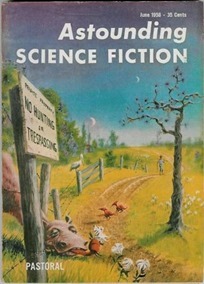
9 – Nine Yards of Other Cloth di Manly Wade Wellman: The Magazine of Fantasy and Science Fiction, November 1958; Ed. Robert P. Mills; Mercury Press, Inc.; $ 0.35; pg.132
The story is one of many that Wellman wrote in his “John the Balladeer” series (also known as the “Silver John” series).
Inedito in Italia: eBook in inglese
The story is set in North Carolina. John, in a wooded hill, is trying to outdistance an approaching person.
John has met Shull Cobart, an unlikable man who is unusually proficient at playing the fiddle. Afterwards, John finds himself walking through the woods to Hosea Hollow, a place considered by the local populace to be haunted. He comes upon a cabin that is the home of Evadare, a single woman who had worked for Cobart but who ran off to live in the hollow after rejecting Cobart’s romantic advances. The same day that John and Evadare meet, they are visited at the cabin by Cobart. In order to have Evadare to himself, Cobart reveals the supernatural power of his fiddle and uses that power to force John to join him outside to meet Kalu, the demon that actually does haunt the hollow. Unbeknownst to Cobart, but figured out by John, Kalu has redeemed itself and is now a force for good. Kalu kills Cobart, thus releasing John from the fiddle’s spell.
Afterwards, Evadare asks John to live with her in the cabin. But John does not want to give up his wandering ways and runs off. It is Evadare who was the person chasing after John at the beginning of the story.
The story’s title is a reference to the amount of cloth that would typically be used for a burial shroud.


NB: U. = Urania; U. Coll. = Urania Collezione; GO = Grandi Opere Nord; G. = Galassia La Tribuna.
Il numero dopo / indica il numero del racconto nell’antologia.
Molte altre pubblicazioni e covers le potete trovare in Uraniamania, o nel Catalogo Vegetti.
Mancano moltissime trame perché non reperite su Internet, e anche se ho letto tutti quei racconti, a dire la verità, non me li ricordo. Alcuni racconti completi li potete reperire sempre su internet, in inglese.
Ferdinando Temporin
